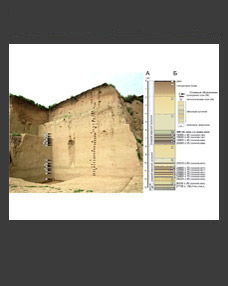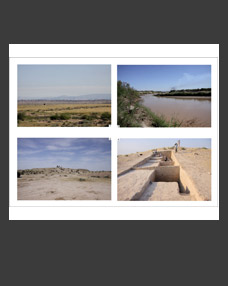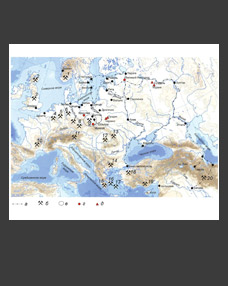Nikolay N. Seregina, #, Alexey A. Tishkina, ##, Sergey S. Matrenina, ### and Tatiana S. Parshikovaa, ####
aAltai State University, Barnaul, Russia
#E-mail: nikolay-seregin@mail.ru
##E-mail: tishkin210@mail.ru
###E-mail: matrenins@mail.ru
####E-mail: taty-parshikova@yandex.ru
Keywords: Altai, the Rouran period, necropolis, funeral rite, artefact complex, chronology, ethnocultural history, Dialian tradition.
The article presents the results of studying materials obtained during excavations of the Bulan-Koby necropolis identified as part of the large multi-temporal archaeological complex Choburak-I. This site, located in Chemal district of the Altai Republic, is being studied by an expedition from Altai State University. The burial ground included 12 mounds, which contained undisturbed burials of seven men, three women, a teenager and a child. The key features of the ritual practice identified during the excavations include a small stone mound with an oval stonework-crepidoma; shallow graves; single human inhumation; the head of the dead person pointing northwest; accompanying burial of a horse, laid “at the feet” and on top of the deceased. Representative grave goods was found in the burials, including weapons, items of human equipment, tools and household products, ornaments, as well as horse harness. An analysis of these finds makes it possible to determine the time of construction of the Choburak-I necropolis as the middle – second half of the 4th century AD, which is confirmed by the results of radiocarbon dating. An assumption was made about the short period of the burial ground functioning (no more than 30 years). It was established that this complex belongs to the Dialian tradition of ritual practice of the Bulan-Koby population, the bearers of which constituted the elite of the Northern Altai nomads in the Rouran period.
DOI: 10.31857/S0869606324010109, EDN: ZVWFMY







